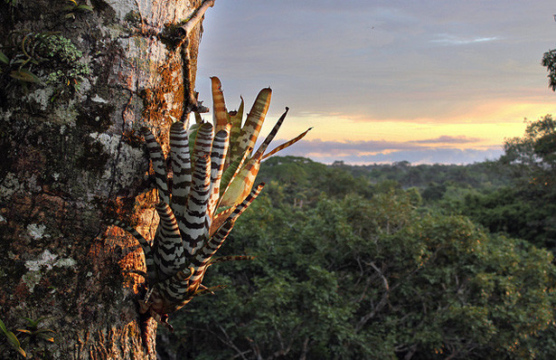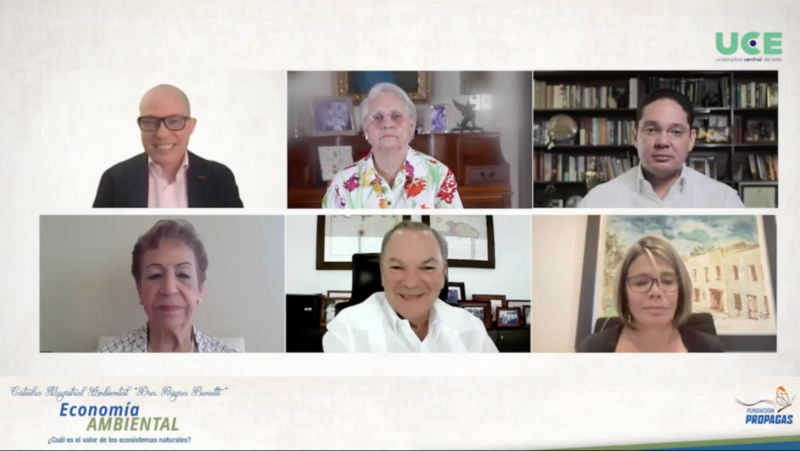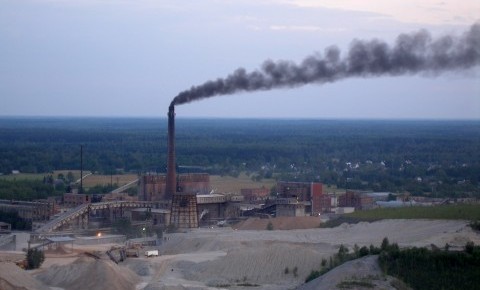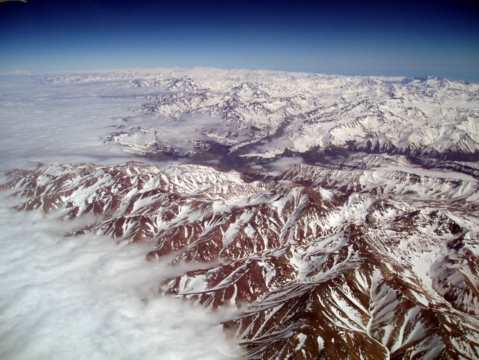
Development vs. Conservation
Ecuador may well play a decisive role in the outcome of the global tension between economic development and environmental conservation.
This post is also available in: Español
Healthy ecosystems are essential for human health and prosperity, yet they are also under pressure from unsustainable development. In the Dominican Republic, coastal ecosystems, for example, are threatened by human activities despite their particular importance for mitigating the impacts of climate change (such as stronger hurricanes). In light of this challenge, the economic valuation of ecosystem services is a powerful tool for improving natural resource management, strengthening environmental conservation, and encouraging the adoption of more robust and efficient public policies. This was the main message of the Sixth Edition of the Cátedra Magistral Ambiental, organized on June 2 by the Universidad Central del Este, the Propagas Foundation, and the Inter-American Dialogue and dedicated to Dominican environmentalist Rosa Margarita Bonetti de Santana.
The event’s keynote speaker was Víctor Gómez-Valenzuela, professor at the Technological Institute of Santo Domingo (INTEC). He began by reviewing several concepts central to environmental economics, starting with the economic functions of the environment, which can be analyzed through the concept of ecosystem services (i.e., the aspects of ecosystems that are used actively or passively to satisfy needs or produce well-being). These are classified into four types: provisioning services, such as the supply of water, food, or energy resources; regulating services, which can range from climate regulation to improved air quality or disease control; supporting services, such as photosynthesis or the water cycle, which are the basis for other services; and cultural services, such as the aesthetic value of the landscape, cultural diversity, or the inspiration of religious values.
Gómez-Valenzuela then described some market failures that lead to both a poor allocation of resources and an unsustainable use of the services provided by ecosystems. One of these is the tragedy of the commons, which refers to a problem regulating common goods. These are freely accessible goods over which there is rivalry in consumption, generating incentives for their overexploitation (like in fisheries, for example). He also explained the concept of externalities, which are positive or negative effects of economic activities that lack an assigned monetary value but impact third parties (for example, unpriced air pollution, which is a negative externality, i.e., harmful to society and/or nature).
The keynote lecture closed with the presentation of a study on the economic valuation of the natural capital of the National System of Protected Areas (SINAP), which covers 25 percent of the surface area of the Dominican Republic. The study’s objective was to illustrate to policymakers the practical utility that tools assigning economic value to ecosystem services can yield in identifying areas of improvement for critical economic sectors (such as tourism, responsible for 15 percent of the country's GDP) and making corresponding decisions based on data. The study noted that of the 5.2 million tourists that travel to the Dominican Republic each year, around 20 percent visit a protected area. Given this interaction of natural capital with tourism, the ecosystem services provided by SINAP can be valued at approximately US$3 billion annually. Although this is a significant figure (close to 5 percent of GDP), it can be substantially increased in light of the experience of countries such as Costa Rica.
Following Gómez-Valenzuela's presentation, a panel of experts reacted to his lecture. First, Francisco Alpízar (director of the Department of Economics and professor in the Environment and Natural Resources Group at Wageningen University in the Netherlands) pointed out that it is crucial to produce a policy mix that allows for sustainable management of protected natural areas since some forms of natural capital cannot by replaced by technological advances (for example, the loss of pollinators associated with the destruction of biodiversity has no viable technological remedy). This means, on the one hand, that interventions should focus more on prevention than on correcting environmental degradation and, on the other hand, that there should not be a dichotomy between environment and development, since environmental protection and conservation is essential for the economy.
Carol Franco (professor in the Department of Forest Resources and Environmental Conservation at Virginia Tech) then urged recognition of the key role that nature-based solutions should play in the future, despite the current low investment in conservation in the Dominican Republic (in 2018, less than US$7 per hectare of conservation land). Investing in strengthening mangroves, for example, can help increase resilience and decrease the vulnerability of coastal ecosystems to climate change.
Finally, Frank Rainieri (founder and chairman of the Punta Cana Group) called for a return to conservation and protection of nature to boost the tourism industry in the country and the region through mechanisms such as public-private partnerships. He also suggested devoting a longer conference to deeper discussion of these issues. The event closed with the shared ambition of devising concrete measures to advance the protection of ecosystem services and the recognition of their importance for Dominican and Latin American economies.
This event was held in Spanish.
Ecuador may well play a decisive role in the outcome of the global tension between economic development and environmental conservation.
Argentina’s nascent shale industry is one of the most promising frontiers for unconventional oil and gas development outside of the US.
Though the COP21 negotiations promise to be complex, they also present an opportunity for the region to address existing vulnerabilities.
 Universidad Central del Este
Universidad Central del Este

